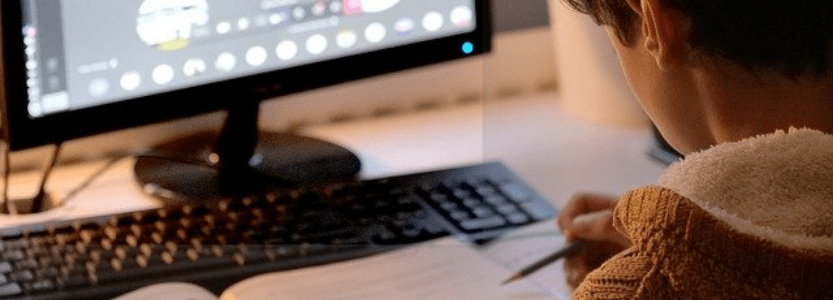Education: what role will blended learning play in the future?
Updated 7th July 2022 | 2 min read Published 12th November 2021

Schools and multi-academy trusts (MATs) have seen the way they operate fundamentally transformed due to the COVID-19 pandemic, with an increase in blended learning ultimately being born from necessity.
But what is the meaning of blended learning and what role can we expect it to play in this school year and beyond? This is my take on the subject.
What is blended learning?
By definition, blended learning is a combination of in-person and digital teaching.
For some, it’s a way to provide added continuity, ensuring learning continues even if teachers/students need to isolate, and for others, it’s a health and safety precaution.
While the concept of using technology alongside traditional learning isn’t new – with universities sharing slides online post-lecture for a number of years – the increased adoption within schools has arisen from the pandemic.
Examples of blended learning?
Blended learning, also known as hybrid learning, can be numerous combinations of in-person and digital teaching, for example:
- Face-to-face: teachers deliver traditional lessons while supplementing them with digital tools
- Rotations: students cycle through independent online study and face-to-face interactions
- Flexible: most learning happens online, but teachers are available for face-to-face support
- Labs: all learning takes place online but in a consistent physical location
- Self-blend: students choose themselves to supplement their traditional learning with online classes
- Online: students complete an entire class online with the possibility of teacher interactions
Is blended learning here to stay?
Similar to how hybrid working has become the new normal in the corporate world, I believe we’ll continue to see forms of in-person and digital learning.
But blended learning will mean different things for different schools, with circumstances impacting the extent to which it’s adopted.
A few factors that will have an impact on the types of teaching used now and in the future are:
1) Private schools
I and my colleagues expect to see digital-based learning used less in private schools as parents are paying for the facilities, and as a result, there’s more of an expectation for students to be in a physical environment.
2) GCSEs and A-Levels
Students in higher year groups are likely to see forms of blended learning in their day-to-day as there is more trust placed in them to engage well with digital learning.
3) Younger year groups
The younger the year group, the less likely students are to maintain attention when learning digitally, meaning I expect to see significantly less blended learning. Additionally, in-person interaction is crucial for early development, once again favouring traditional classroom teaching.
4) Available technology
The amount of hybrid learning adopted is also dependent on the technology and resources available within the school. Do staff have access to the right tools? Can the school supply students with access to a computer if they don’t have one available?
5) COVID-19
Ultimately what accelerated the uptake and will continue to dictate the approach many schools take is COVID-19. As long as students and teachers a having to self-isolate, a requirement for some form of blended learning will exist.
How can IRIS help schools and MATs?
We have a wide range of education solutions to help schools and MATs- click here for more information.
